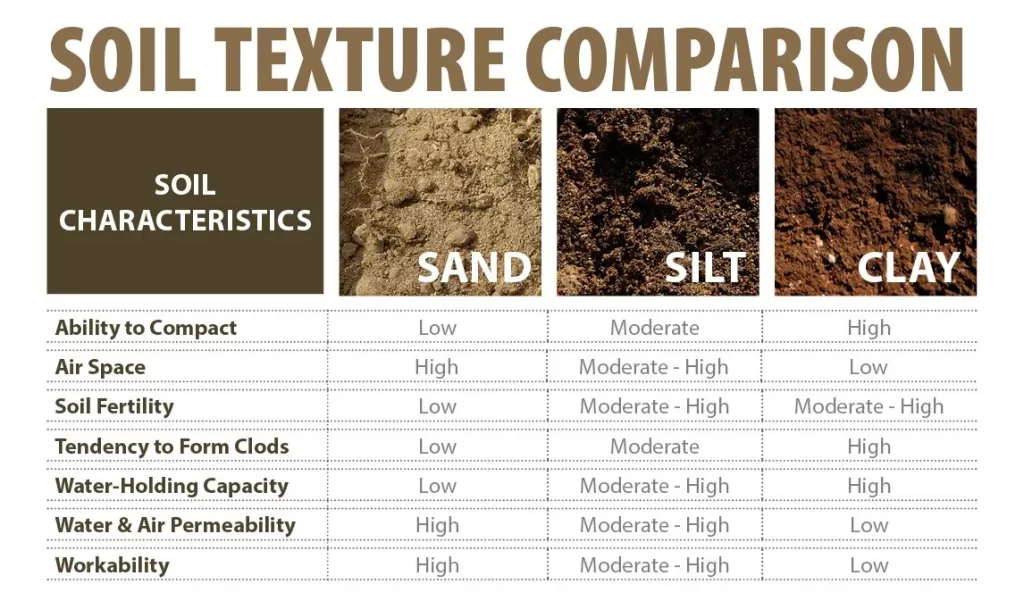
Soil Types and Soil Texture (DIY Soil Test)
Soil Type and Texture: A High-Level Description
-
Soil Type: Refers to the broad categories of soil based on their composition and properties, such as sand, clay, silt, loam, peat, and chalk. Each type has distinct characteristics affecting plant growth and soil management.
-
Soil Texture: Describes the proportion of sand, silt, and clay particles in the soil. It influences water retention, drainage, aeration, and nutrient availability. Common textures include sandy, loamy, and clay soils.

Soil texture and type are crucial for determining soil fertility, workability, and suitability for different agricultural practices.
How does soil texture affect plant growth?
Soil texture significantly impacts plant growth by influencing water retention, nutrient availability, drainage, and root penetration:
-
Water Retention: Sandy soils drain quickly and hold little water, which may cause drought stress. In contrast, clay soils retain water well but can become waterlogged, suffocating plant roots.
-
Nutrient Availability: Finer-textured soils (clay and silt) have more surface area for nutrient retention, making nutrients more accessible to plants. Sandy soils, however, struggle to retain nutrients.
-
Root Penetration: Sandy soils are loose, allowing roots to grow easily. Clay soils can be compacted, making root penetration difficult and limiting plant access to nutrients and water.
-
Aeration and Drainage: Sandy soils provide excellent aeration but poor water retention. Clay soils may restrict oxygen flow due to poor drainage, harming root health.
Loamy soils, with a balanced mix of sand, silt, and clay, are ideal for most plants due to their optimal water retention and drainage properties.
How to test your soil for what type of soil you have -
